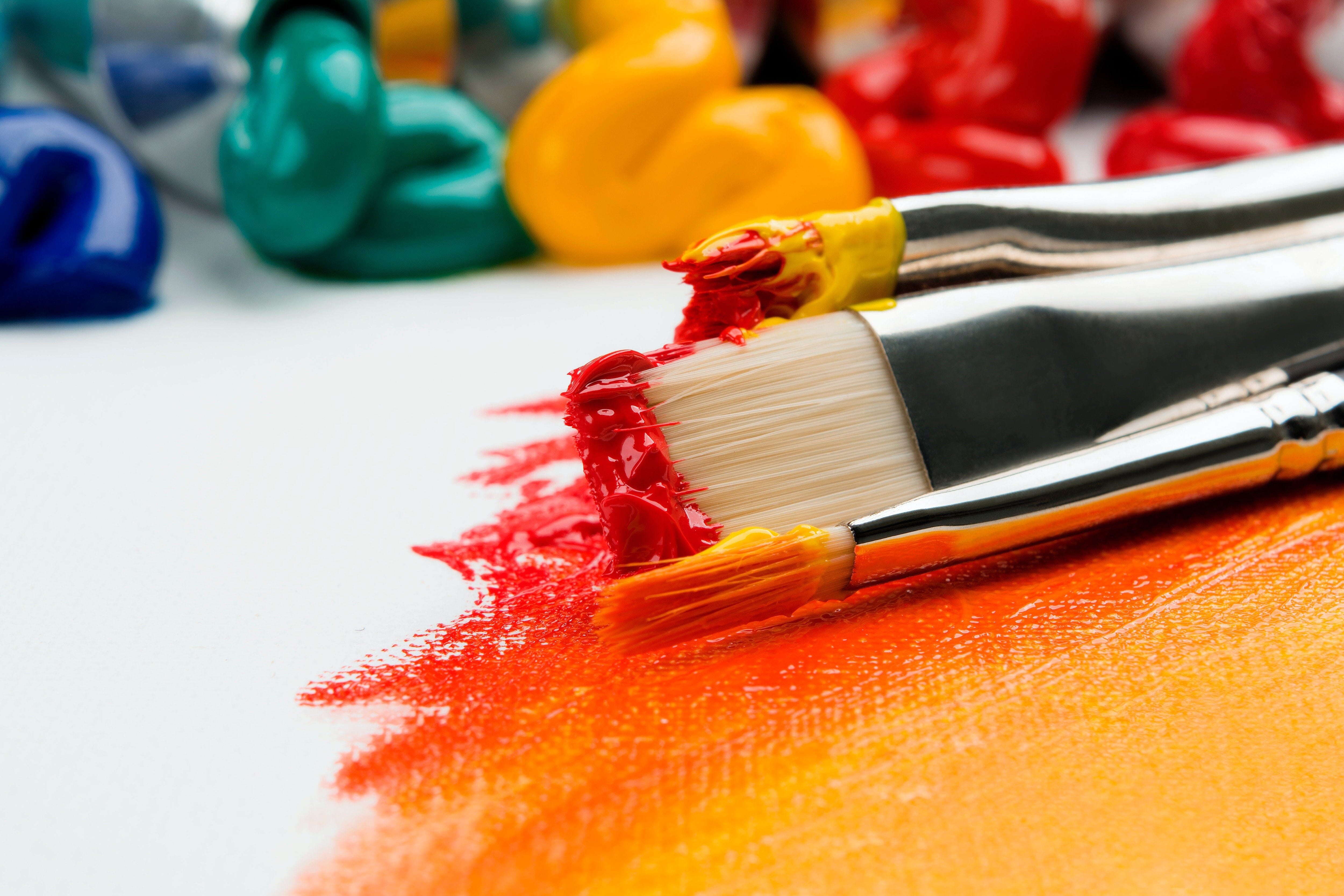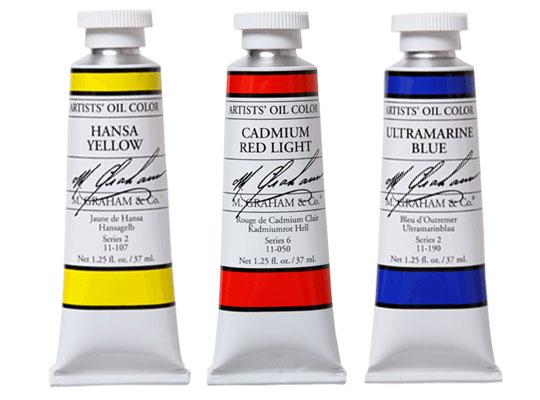
What are Alcohol Inks?
- Alcohol ink is a solution of dye dissolved in isopropyl alcohol
- Alcohol ink is known for intense, highly saturated, translucent colours
If you've ever tried using alcohol inks you will have already experienced the inks moving on their own, slithering and swirling over the page like a living organism. The movement of the inks is beautiful and liberating, and also incredibly frustrating if you're used to having control over your media.

Alcohol-based inks will never behave like other water-based media, and the sooner you accept that, the more success (and fun) you will have. The strange behavior of alcohol inks lies in the different surface tension of isopropyl alcohol vs. water.
- Water has strong molecular bonds which gives water high surface tension; this characteristic is responsible for making water bead-up on smooth surfaces, and what makes water slow to evaporate (relatively speaking).
- Isopropyl alcohol has extremely weak molecular bonds resulting in virtually zero surface tension. This means than when isopropyl alcohol is dripped onto a smooth surface it doesn’t bead-up, instead it immediately spreads out in all directions, moving as far and as fast as it can go, before it evaporates (which happens in seconds).
With practice, alcohol based inks can be controlled to some degree, but they can never be tamed (which is a large part of their beauty).
BE PATIENT
DON’T FIGHT THE INKS
Suitable Surfaces and Applications

- works best on any clean, smooth, non-porous surface
- glass, plastic, metal foil, metal, YUPO & Mineral & Stone papers, vinyl, polymer clay, ceramic, encaustics…
- airbrushing
- wood and leather staining
- custom painted origami papers
- faux finishes
- being dye-based colours, alcohol inks are inherently fugitive (prone to fading over time)
- Dye based colours are also inherently transparent
- With Jacquard Piñata brand ink, the Gold, Silver, and White inks are pigment-based and are opaque in nature. (These colours do not exist in a dye.)
- Colours can be blended together to create an array of new colours
- Alcohol inks are indelible and moisture-resistant when dry
Things to to Avoid
Contact with Adhesives:
- Isopropyl alcohol seems to dissolve most adhesives, so don’t bother trying to use masking tape to mask-off areas, it doesn’t work. (However masking fluid works excellently with alcohol inks!)
- Unscrew lids from ink bottles far away from your working surface!

I've made this mistake countless times and it really sucks, so learn from my mistakes: When the lids are unscrewed, speckles of dried ink inside the lid will flake off. If they fall on your wet artwork, the speckles of colour will immediately saturate and bloom outwards which is irreversible and so very upsetting!
- Be patient and allow colours to dry somewhat before adding more colour. When you do add colour, add it sparingly or the colours will mix together and become dark, over-saturated and muddy. Remember that mixing red + blue + yellow = brown/black
Dilute, Dilute, Dilute:

- Diluting colours is highly recommended; the colours will be more luminous, plus you will achieve a far more natural palette and get far more mileage out of the ink.
- Piñata Claro Extender will extend colours but also makes them thicker, more glossy, and slower to dry.
- or use fast drying and inexpensive isopropyl alcohol (99% only!) which doesn't increase sheen, and dries fast.
Using isopropyl alcohol that is less than 99% (in this example; I used 91% alcohol), will leave your artwork pock-marked because of the higher water content; it will also take much longer to dry. The higher water content also deadens the alcohol’s wonderful swirling effect.
Small Size and Big Numbers:
- for the greatest success, paint on small surfaces and in multiples
Sometimes a piece you're working on will look beautiful immediately, and sometimes it immediately goes horribly wrong. Success with alcohol inks is very much a game of chance, and a numbers game; you cannot win every time. The more pieces you do, the more successful pieces you will have to show for it. As I mentioned earlier, if a piece goes wrong, don't waste another moment on it, just set it aside to dry and you can "fix" aspects of it later.

The piece on the right (5x7") was initially a total failure; it's dark, over-saturated, a big ol' mess. I moved on to other pieces, setting this aside to dry for a while. Later on I went back to it and began to lift colour to create fern fronds. Now it's one of my favorite pieces!
Working on a small scale allows the greatest chance of success. Alcohol evaporates so quickly that it's extremely challenging to uniformly fill a surface as large as 9x12" without it taking multiple applications of colour; and then you're risking having it look blotchy, over-saturated and overworked. With alcohol-based inks I generally work on a very small scale (3x3", 3x4", 4x6", 5x7", 4x8"...)
How to Paint with Alcohol-Based Inks
In general, artwork can be narrowed down to two categories;
Abstract & Representational
- Abstract art seeks to break away from traditional representation of physical objects. Abstraction aims to explore the relationships of form, pattern, colour, line, and texture while evoking emotion.
- Representational art translates the physical world in recognizable images. The imagery is clearly derived from real object sources, and is therefore by definition representational.
Abstract Painting
Abstacting with alcohol inks is super easy; simply apply the inks to a non-porous surface, and watch them mingle.
One of the most effective way to move inks around the page is to blow through a straw. (the two flower pieces at the beginning of this article were created using a straw.) The hardest part about abstracting with alcohol inks is knowing when enough is enough; when to leave it alone and when to stop adding colour.
Representational Painting
A very basic place to start is to try Dreamscaping; this is a term used by YouTube artist and teacher June Rollins. She has developed a very simple formula for creating beautiful other-worldly landscapes in seconds.
Representational painting can be broken down to two basic painting techniques: Additive & Subtractive
- Additive painting is the act of adding colour (often from a palette) onto your substrate.
- Subtractive painting is the act of re-working an area where colour has already been applied to the substrate and has dried. This can mean moving and/or removing ("lifting") colour.
Additive Painting:
- For representational painting with alcohol inks, I don't recommend applying colour straight from the bottle to the substrate because you'll have no hope of controlling it. Instead, portion your colours onto a palette, and apply colours from the palette using a very small paintbrush. (Colours on the palette will dry out but can easily be re-moistened with more alcohol.)
- work very slowly

The example on the right shows two peaches painted in the traditional additive way; I added a bit of colour with a brush & let it dry, then blended and extended with plain alcohol on a brush, let that dry, added more colour, and so on... (3x4")

The example on the left shows two apples that were first outlined and shaded in using Sumi-i (black, non-permanent, water-based) ink. Sumi-i ink is re-soluble and would bleed or smear if you applied other water-based media over it (like watercolours or drawing inks), but when I used alcohol inks to add colour to the apples, the black ink didn't budge at all. (3x3")
Subtractive Painting:
- whenever possible lay down the background first, allow to dry somewhat and then add the foreground
- add lighter colours first and darker colours last

In this example (3x3") I laid down the pink and green colours and let them dry completely. Once dry, I used a very fine paintbrush moistened with plain isopropyl alcohol to create the flower petals
Helpful Tools for Subtractive Painting:
- Isopropyl alcohol
- extra-fine paintbrush
- cotton swabs (Q-Tip)
- tissue, paper towel or rag
- toothpick
Techniques for Subtractive Painting
Moving Colour:
- dip your tool of choice in extender/alcohol (it should be damp, not dripping). Dab off any excess on paper towel or rag
- lightly touch the tool to an area of already dried ink
- wait a second to see how it spreads and adjust amount of extender/alcohol accordingly
- use a tool or blow through a straw to gently push or pull the re-moistened ink, adding more extender/alcohol as necessary
- work slowly and be conservative as you add thinner
- lifting works best with isopropyl alcohol (as opposed to the extender)
- begin the same as above
- when the dried ink is reactivated and is pooling again, use a dry paintbrush or dry Q-tip to dab the center of the reactivated area.
The dry brush or cotton swab will wick up any liquid alcohol and colour, removing it from the page and also halting any further spreading.
Happy Painting!







